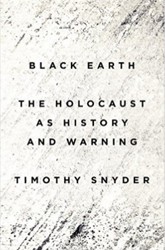How to make sense of a senseless act — this has been one of the primary driving forces in attempts to understand the Holocaust. Victor Ripp, the talented writer who takes up this question in Hell’s Traces, applies his ingenuity and investigative skills to trying to uncover the reasons behind the murder of his three-year-old cousin, Alexandre, torn from his home in Paris in July 1942 and gassed at Auschwitz.
Ripp starts by putting the young boy into the context of his own family history of loss, suffering, and exile. On his father’s side, ten relatives perished, while on his mother’s side, all escaped the Nazis by fleeing. Why were these two paths so divergent? How might the differences be reconciled?
To Ripp, the Holocaust is not long-ago history, but rather a series of events that were experienced directly. In order to better understand them, and to try to give order and sense to the chaos and trauma, he studied and visited Holocaust memorial sites throughout Europe. Although he made pilgrimages to six countries and went to a total of 35 memorials — each one singular and moving — he struggled to create a coherent picture of what happened in the Holocaust, and why.
In order to gain as deep an understanding as possible, Ripp listened to the testimony of survivors, and interviewed the artists and architects who designed and built the memorials. He also spoke with scholars who wrote about and interpreted the events that the memorials commemorate.
But while memorials can honor the past, can they help us recover from it? Ripp grapples with this question. Hell’s Traces is organized like a travel journal that can guide readers on a journey of their own. At every stop in every country, Ripp brings in history, geography, culture, art and politics — whether he is viewing a museum exhibit, a statue, or a column of stone with nothing more than the names of the dead engraved on its sides. We learn the how and why of every memorial, and in so doing we gain insight into the Holocaust itself and the people who care enough to make the memories last.
Ripp is a retired professor of Russian literature, and his international viewpoint and fluid writing style infuse the pages with color. From Germany to New Jersey, he ties together the conception, design, and building of the memorials in a way that honors little Alexandre, the young cousin who was exterminated in Auschwitz, and at the same time helps us cheer for the family members who were able to escape the Nazi trap and flee to safety and a new life in the new world.
Linda F. Burghardt is a New York-based journalist and author who has contributed commentary, breaking news, and features to major newspapers across the U.S., in addition to having three non-fiction books published. She writes frequently on Jewish topics and is now serving as Scholar-in-Residence at the Holocaust Memorial & Tolerance Center of Nassau County.




